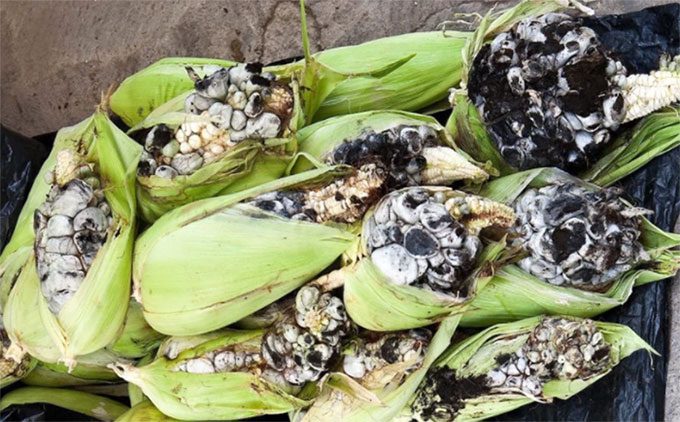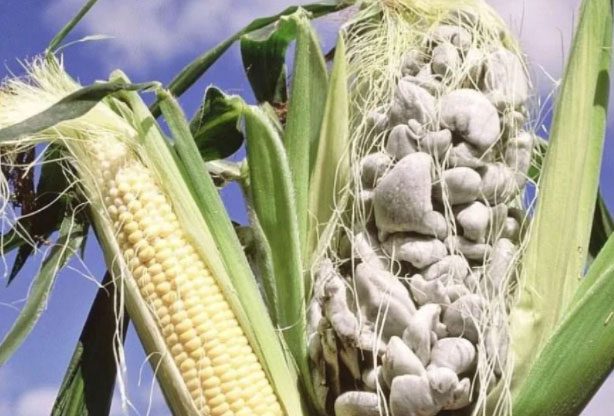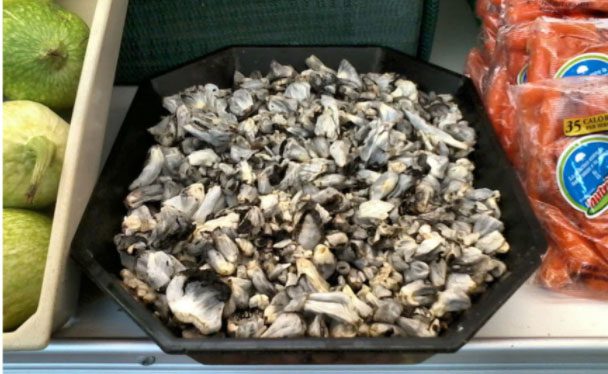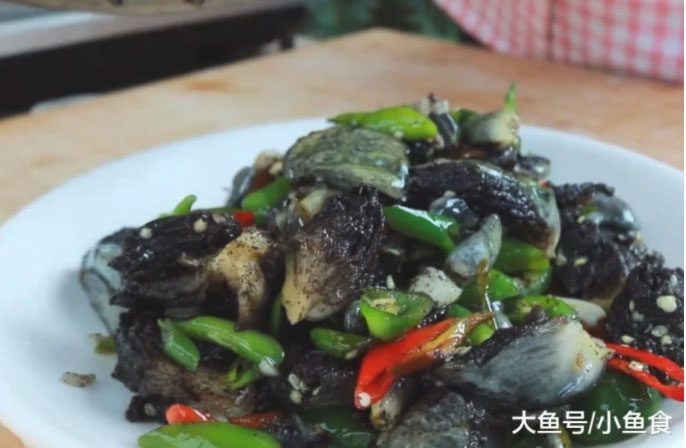When the Aztecs expanded their vast empire in the Valley of Mexico from the 14th to the 16th century, one of the biggest questions they faced was how to feed millions of people.
The answer ultimately came in the form of irrigated terrace farming systems and chinampa (artificial floating islands used for agriculture), which provided enough food to sustain a growing population.
These advanced agricultural practices formed the foundation of a diverse diet that included tomatoes, chili peppers, beans, squash, and of course, corn—a sacred crop in Aztec mythology. However, like most other civilizations, the Aztecs encountered unexpected challenges in their agricultural revolution that required them to adapt. One of those discoveries was huitlacoche.
Also known as cuitlacoche, huitlacoche is corn smut, a type of fungal spore that infects corn before the mushroom ears fully develop.

For farmers, when corn is “bumpy,” it means yields will decline. (Photo: Baidu)
This condition arises from the fungus Ustilago maydis, which typically develops in corn-growing regions. It occurs after rainfall on corn ears, resulting in white, pink, gray, or black galls. The spread of this disease usually happens during the annual rainy season and leads to the rampant growth of the fungus, deforming the corn kernels and making them look frightening to most people.
These corn galls appear quite unappealing, being abnormally large compared to corn kernels, with a smooth, grayish-white exterior and a dark interior. Many believe that these galls carry pathogens, so when discovered, they often seek to destroy the affected corn.

This is a harmful fungus on corn plants. (Photo: Baidu)
However, in reality, they are not toxic; on the contrary, food enthusiasts around the world are often willing to pay a high price for these corn galls. Why is there such a strange phenomenon?
This is because these ugly galls are not toxic; they have a sweet flavor and are highly nutritious. From these corn galls, a variety of delicious and distinctive dishes can be prepared. However, huitlacoche can only be cooked or eaten raw when tender; once dried, it becomes inedible.
When cooked, huitlacoche has a soft texture due to the fibers of the corn. It closely resembles the type of mushroom that many chefs love to use in their risottos, stews, and sandwiches.

However, it is not toxic to humans and can be used for food and medicinal purposes. (Photo: Baidu)
Dishes made with huitlacoche typically carry the flavors of both corn and mushrooms, along with a dark color. For example, Mexicans often prepare corn galls into appetizers such as quesadillas, corn tamales, soups, or tacos.
To enhance the dish’s flavor, they are often cooked with garlic and chili. Huitlacoche can be cooked with chicken or fish or any other ingredient, as it easily complements various flavors. In fact, dishes made from huitlacoche are served in many restaurants around the world.

In many countries, huitlacoche is prepared into a variety of delicious dishes. (Photo: Baidu)
Additionally, huitlacoche can also be used as a medicinal remedy. According to the book Chinese Materia Medica, it has calming effects and supports the spleen, stomach, liver, and gallbladder. Huitlacoche is rich in fiber, minerals, iron, vitamin A, B1, B2, B6, C, potassium, and more. Americans have included this huitlacoche in the list of edible mushrooms.


















































